Nakraudfandili: the best projects for February 2018
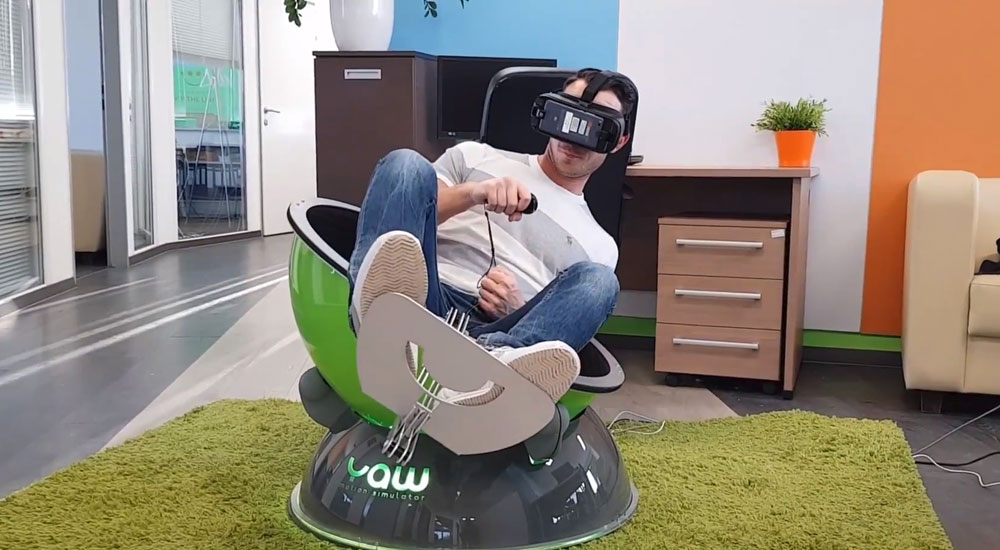
The short month of February is in the habit of passing by unnoticed. But the show must go on, so the crowdfunding did not stop at the end of the calendar winter. Here is a selection of the ten most successful gadget projects that closed fundraising campaigns in February. Warning: this is exactly financial success, i.e. about the volume of funds raised. In fact, those who reached out to the Kickstarter backer wallet hit our top.
Here is a summary table with all the projects in the top.
# | Project name | What is it | How many have collected |
| one | Hyperdrive | Hybrid USB hub and Qi-charging | $ 657,117 |
| 2 | LattePanda Alpha | Single board computer | ~ $ 626,105 |
| 3 | Pitta | Hybrid drone and camera | $ 556,710 |
| four | Mycroft Mark II | Smart speaker | $ 394,572 |
| five | Fitt 360 | Wearable 360-degree camera | 381,496 $ |
| 6 | Evo planner | Weekly with attachment | $ 367,158 |
| 7 | The Sound Reactive LED Mask | Smart mask | ~ $ 296,314 |
| eight | UNIZ-UDP | 3D printer | $ 257,968 |
| 9 | Omni-pillow | Traveler Pillow | ~ $ 250,504 |
| ten | Yaw vr | VR seat | 219,281 $ |
# 1 Wireless Charging and HyperDrive Hub
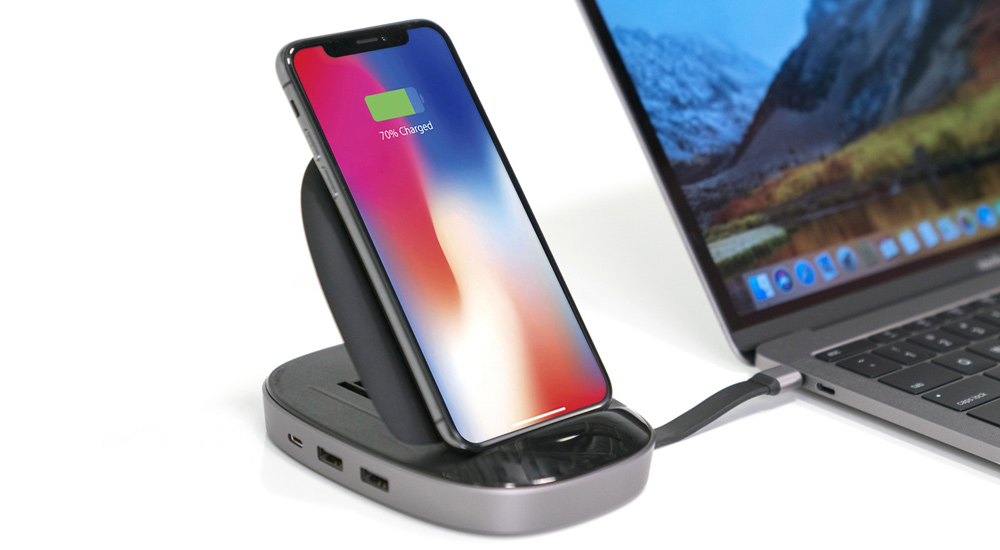
Collected: $ 657,117 with a target of $ 100,000.
Deliveries: scheduled for April 2018 for Kickstarter backers. Additional fees continue on Indiegogo.
')
Hyper brand of the American company Sanho Corporation is known for its “apple” accessories and patent disputes with Apple. Sanho is a frequenter of the main crowdfunding platform, for 2018 she conducted 6 campaigns for very different gadgets. The last time funds were collected in the past January-February in order to launch a curious hybrid of wireless charging for a smartphone and a hub called HyperDrive.
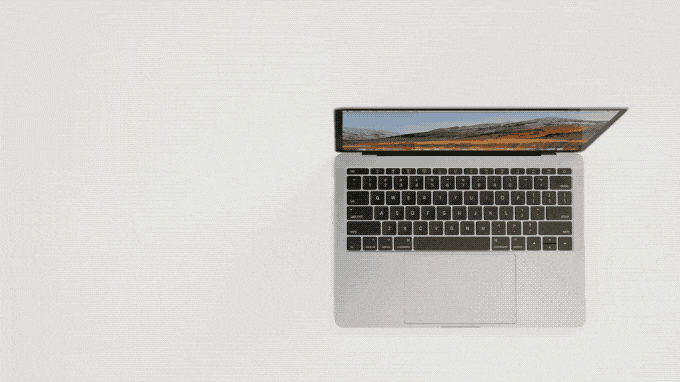
Like the rest of the gadgets Hyper, the new hub has a minimalist design "for Apple". It serves as the perfect gadget for the MacBook Pro, which suffers from a lack of familiar connectors. HyperDrive connects to one USB-C port, after which the owner gets access to three USB 3.1 connectors, one HDMI (1080p @ 60Hz, 4K @ 30Hz), one Gigabit Ethernet, to slots for SD and microSD memory cards, and to the port USB-C with support for Power Delivery technology with a maximum voltage of 60 watts - that is, also to charge for a laptop.
As for the wireless charger, it is a stand for a smartphone at the top of the HyperDrive. Stand tilts at different angles as desired by the user. Three inductive coils are hidden inside, so the phone will charge equally well no matter how it is turned. Charging supports Qi standards for 5, 7.5, 10 and 15 watts and works when connected to any USB-C port. It almost does not heat up and uses such a resonant frequency so that it does not interfere with the functions of the iPhone like Face ID. With smartphones based on Android charging is compatible. The price of pleasure ranged from $ 79 on Kickstarter, for an indefinite campaign on Indiegogo the price was raised to $ 119.
# 2 LattePanda Alpha Single Board Computer
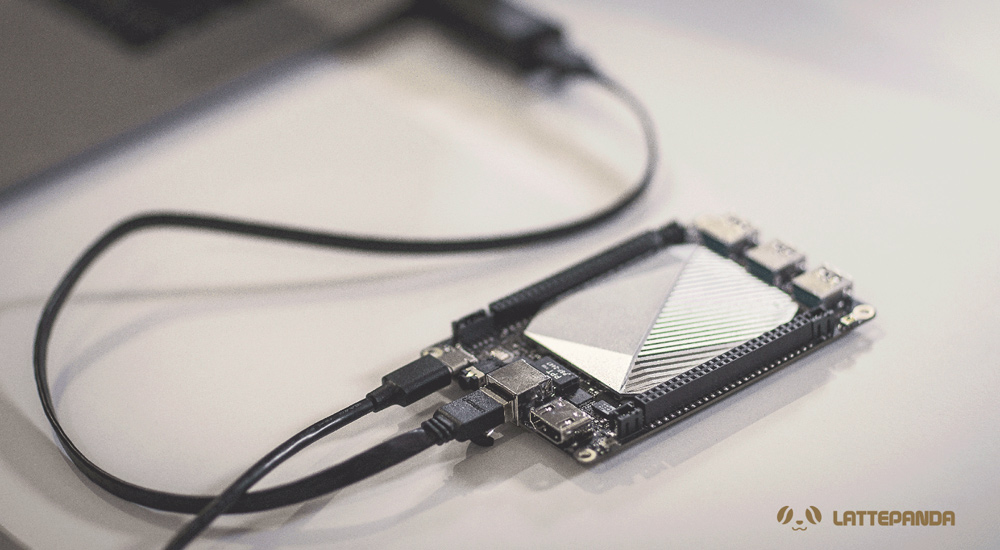
Collected: ~ $ 626.105 with a target of ~ $ 96.875.
Deliveries: Begin in May 2018 for Kickstarter backers. Additional orders are accepted on Indiegogo.
LattePanda Alpha is a small single-board computer on which Windows 10 is installed. Nevertheless, its creators, a Shanghai startup Lattepanda, claim that in fact the gadget has a MacBook soul. After all, a small computer has almost the same processor as the last Apple notebook: a dual-core Intel Core m3-7Y30 with a frequency of 2.6 GHz (in MacBook, for comparison, costs m3-7y32).

Some of the other characteristics are also similar: 8 GB of RAM, integrated Intel HD Graphics 615 graphics processor (frequency 300–900 MHz), Wi-Fi 802.11ac and Bluetooth 4.2 modules. Internal memory - 64 GB eMMC storage. In addition, the board is equipped with a separate Arduino Leonardo controller (ATmega32u4) and has three USB 3.0 ports, one USB Type-C, Gigabit Ethernet, HDMI (4K @ 60Hz), a slot for microSD. In addition, there are connectors M.2 for connecting SSD-drives, and a radiator with a cooler for cooling. From accessories, backers were offered a small 7-inch touchscreen and case. Board dimensions: 115 by 79 mm.
The device, as mentioned above, immediately comes preloaded with Windows 10 Pro, and it is the full version, and not Windows 10 IoT. Order LattePanda Alpha could be for an amount of $ 269, but this is for Kickstarter. At Indiegogo, the cheapest option, without flash memory, will cost as little as $ 279, and with memory and activated Win 10, all of $ 369 will be released. By the way, if you suddenly for some reason do not want to deal with the beautiful creation of Microsoft, then LattePanda works with Linux.
# 3 Drone-transformer Pitta
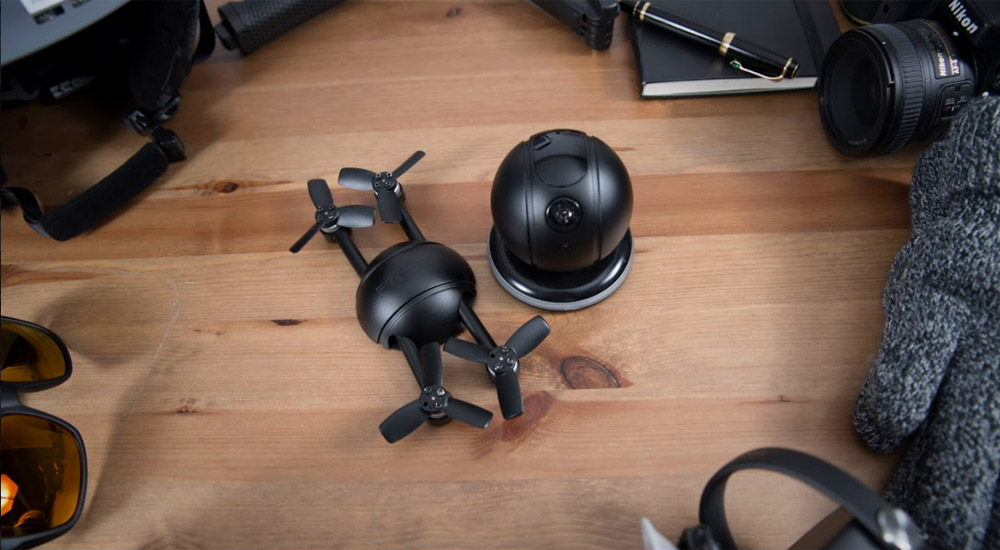
Raised : $ 556,710 with a target of $ 50,000.
Deliveries: scheduled for April 2018 for Kickstarter backers. Additional fees continue on Indiegogo.
Drones and crowdfunding have a very strained relationship. Funds for drones are collected actively, but startups often “do not take off”, or the final product is not impressive. Therefore, it is hard not to feel skeptic at the sight of Pitta, the next crowdfunding quadrocopter. It was developed by the Korean company Eyedea. The idea, on paper, is excellent: 3-in-1, an autonomous self-drone transforming into an action camera and a home security camera.
The base is a ball-sized fist made of rubber material, at the base lies a mount for a tripod. The 13 megapixel camera has a 1 / 3.06 inch matrix and is capable of shooting 4K video at 30 frames per second. Stabilization is only digital, and memory is only built-in and limited to 32 gigabytes. Card slot is not provided.

To turn the camera into a drone, you need to unscrew its top "cover" and replace it with a quadrocopter module. In this form, Pitta weighs 200 grams, the size of the copter diagonally is 17 centimeters. The battery lasts for 15 minutes of flight, or for 100 minutes of shooting an action camera. Since the drone is controlled from a smartphone via Wi-Fi, its range is limited to 20 meters. As for the "surveillance camera" mode, by that the Koreans means the stay of the gadget on charging, from where it broadcasts live video. Pitta cost starts at $ 268.
# 4 Smart column Mycroft Mark II

Raised: $ 394,572 with a target of $ 50,000.
Deliveries: Begin in December 2018 for Kickstarter backers. Order taking continues on Indiegogo.
Free cheese is only in a mousetrap. Household wisdom is effectively illustrated by friendly virtual assistants developed in large corporations. Both Alex, and Cortana, and Siri are happy to collect personal data for commercial purposes. Therefore, the startup Mycroft has made its own, open, intelligent helper who will not sell friendship with you to advertisers.
The column Mycroft Mark II, as the name implies, is already the second version of the “home” for the “honest” virtual assistant. The basis of the gadget is a quad-core Xilinx processor. In the column are two 10-watt speakers, six noise-canceling microphones, Bluetooth and Wi-Fi modules, audio output, a USB connector and a slot for a microSD card. Outside, the Mark II is decorated with a 4-inch LCD display, which displays useful information or the assistant's “face” (the available HAL 9000 red camera from the Space Odyssey is among the available graphics).

Column compatibility is limited for now. It works with Philips Hue lights and services like YouTube, Gmail, Twitter, Facebook, Wikipedia. The developers promise that in the future the list will expand and be comparable to what is offered by large corporations. Price Mycroft Mark II: from $ 89 on Kickstarter. The secret of personal life: priceless.
# 5 Wearable 360-degree camera FITT360
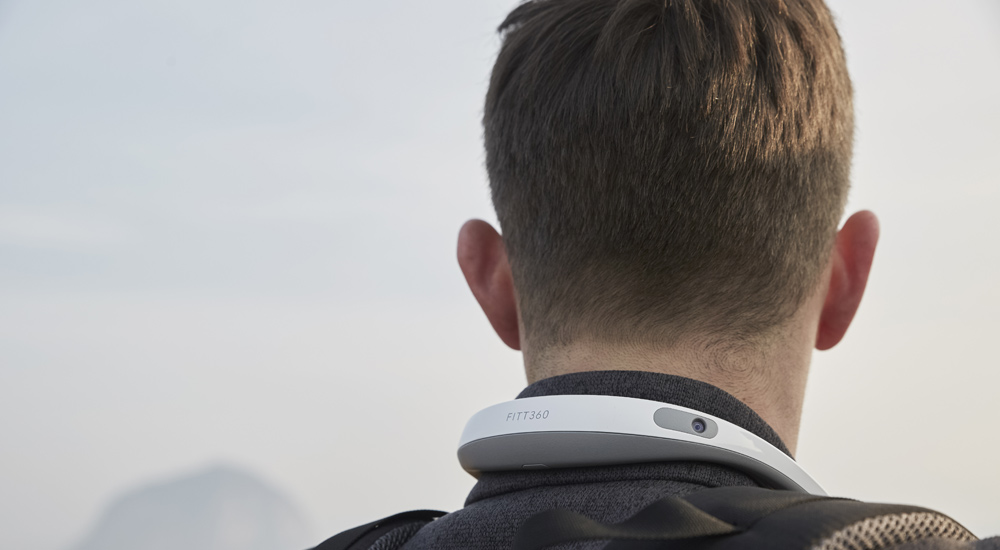
Raised : $ 381,496 with a target of $ 50,000.
Deliveries: start in October 2018.
Korean startup Linkflow, founded by former employees of Samsung, seriously rethought the form factor of the 360-degree camera. The result of their work - a gadget called FITT360, reminiscent of the bezel of sports wireless headphones. But together with wires with “plugs”, there are three separate cameras built into it: one at the front left, and two at the back. Each has a viewing angle of 180 °, the material they captured is automatically glued together in 360-degree video or panoramic photos. The user has the ability to export both “flat” images and clips taken on each camera.

The final resolution of photos is 4480 x 2240, video - 3840 x 1920 pixels. The camera has a microphone, Wi-Fi, Bluetooth and GPS modules, making it easy to conduct 360-degree broadcasts from it. Both broadcasts and videos are shot at 30 frames per second. The battery capacity is 2400 mAh, which is enough for 90 minutes of the device. Recording is done on a 128 GB SD card inserted in the camera. The camera is controlled both from a smartphone and using physical buttons on the rim.
Example of a 360-degree video shot on FITT360.
The neck is chosen as a place to wear FITT360 for the reason that the gadget is less shaking. Another advantage is the proximity of the camera to eye level. The cost of an innovative device ranged from $ 370 on Kickstarter, the retail price will be about twice as high.
# 6 "Smart" diary Evo Planner
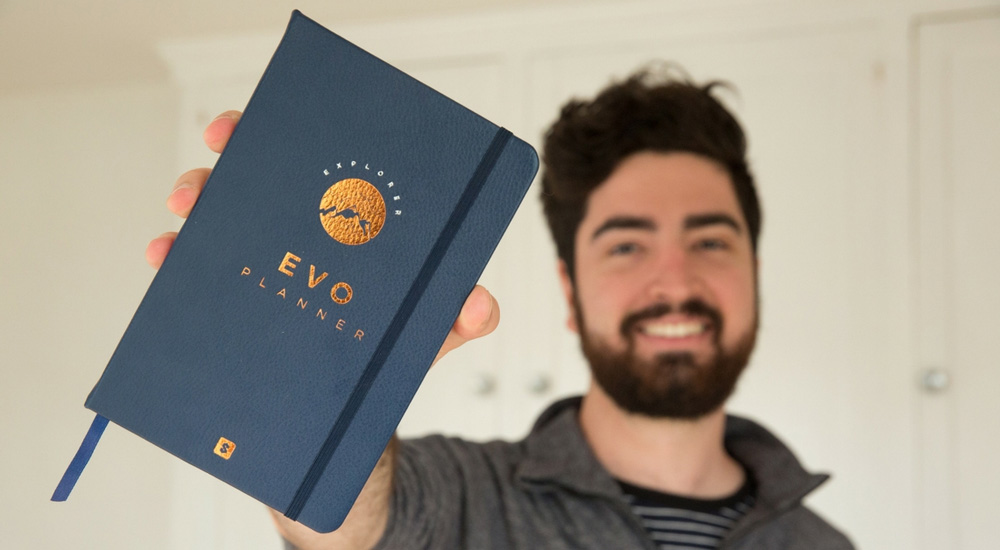
Raised : $ 367,158 with a target of $ 15,000.
Deliveries: Scheduled for April 2018 for Kickstarter backers. Order taking continues on Indiegogo.
According to the creators of the daily Evo Planner, the little book invented by them is “a bridge

The Evo system is based on a test that reveals one of four psycho-types. “Architects” love order and sequence, “oracles”, on the contrary, are guided only by intuition. "Researchers" are most happy and productive in the lap of nature, and "alchemists" prefer to experiment, both in thought and in practice. Accordingly, there are four types of diaries, each of which must best meet the needs of its owner. On some pages QR codes and round fields are put. The last ones you need to fill out and then scan the page with a smartphone into the application. The latter, presumably, keeps statistics and helps to identify the individual characteristics of the owner, affecting the concentration and productivity.
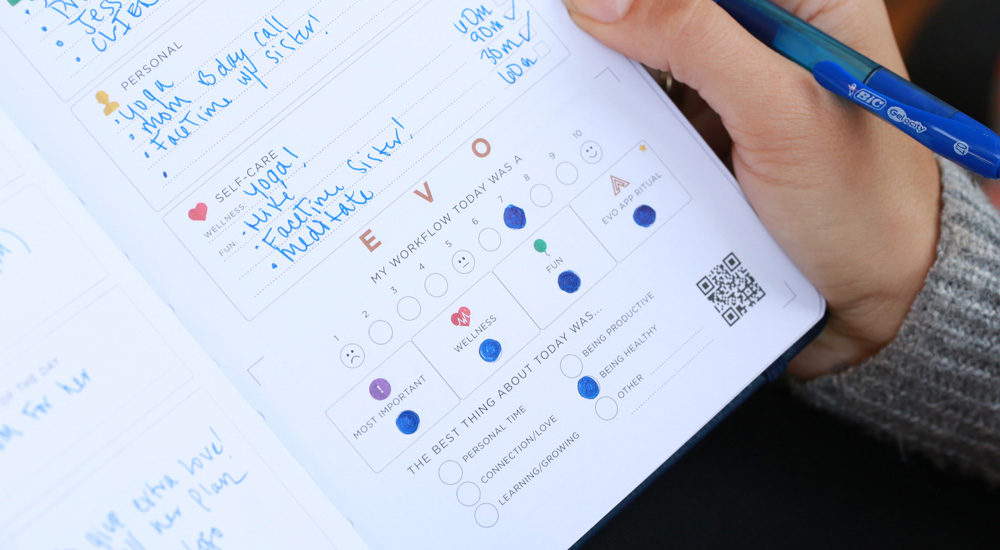
The diary itself is very beautiful: high-quality thick paper (80 g / m2) with a gold edge, blue binding with gold lettering and bookmarks. Total pages 256. On Kickstarter, the price of the Evo Planner started at $ 29, for Indiegogo jumped to $ 39. The average price for a good daily diary on Amazon varies between $ 5 and $ 18 (this includes Moleskine and the popular “Destroy Me” notebooks). Approximately the same prices in Russian stores. It is not possible to estimate how much Evo is better: even the application has not yet been released.
# 7 Glowing The Sound Reactive LED Mask Mask
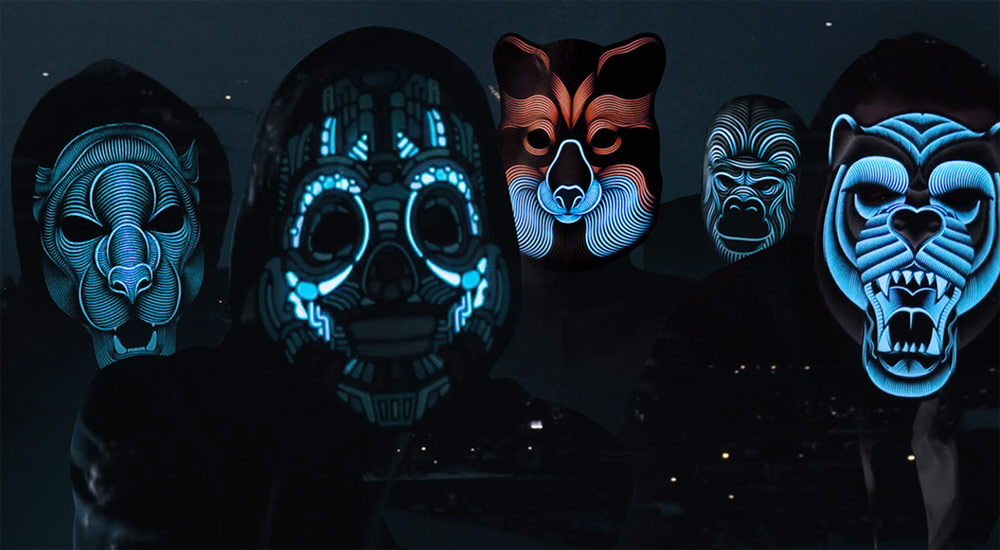
Raised : $ 296.314 with a target of $ 11.625.
Deliveries: scheduled for April 2018. Order taking continues on Indiegogo.
It seems to you that you have already seen such a mask? Indeed, Canadian startup Outline Montréal has already turned to crowdfunding and launched the first version of Sound Reactive Mask in 2016. New mask - work on the bugs and an improved version. Especially striking differences in design, it has become more complex and diverse. Possible options include the phosphorescent faces of Barack Obama and Raul Duk.

The mask glows due to phosphoric ink on the layer of transparent conductor under the main pattern. The sound is captured by a sensor attached to the mask strap. The signals are then transmitted to the mask and its different parts light up in accordance with the sounds and program that they capture. The creators of a fancy gadget managed to reduce the size of the battery and electronic "stuffing". Now the whole structure weighs 80 grams, two times smaller than the original. Charging device via USB-port.
The price of the mask was about $ 19.5 on Kickstarter. At Indiegogo, the price has risen to $ 30, and at retail the device will cost all $ 40.
# 8 3D printers Slash OL, Slash +, Slash Pro and zSLTV-M

Raised : $ 257,968 with a target of $ 30,000.
Deliveries: scheduled for April-July 2018.
Uniz first appeared on Kickstarter in 2016 with a Slash stereolithography 3D printer. For a couple of years, the technology was improved, and now the campaign of the second generation of devices, consisting of the Slash OL 3D home printer (Online), Slash Pro, the industrial zSLTV-M and the reworked original Slash +, has successfully completed on the same platform.
The principle of operation, as before, is to expose the polymer resins using LCD panels. Liquid material is poured into the tub, from which a new model is literally “pulled out”. Little gizmos are printed literally in minutes. Growth rate along the Z axis reaches 720 mm / hour thanks to the new UDP technology (Uni-Directional Peel). In addition, the problem with cooling the material and the printer during printing was solved.

The cost of pre-order models was as follows: from $ 599 for Slash OL, from $ 1,499 for Slash Pro, $ 7,499 for industrial zSLTV-M, $ 2,499 for Slash +. Owners of the original printer were offered either an upgrade kit to version “+” for $ 499, or an exchange for a novelty for the same $ 499.
# 9 Omni Pillow Traveler Pillow
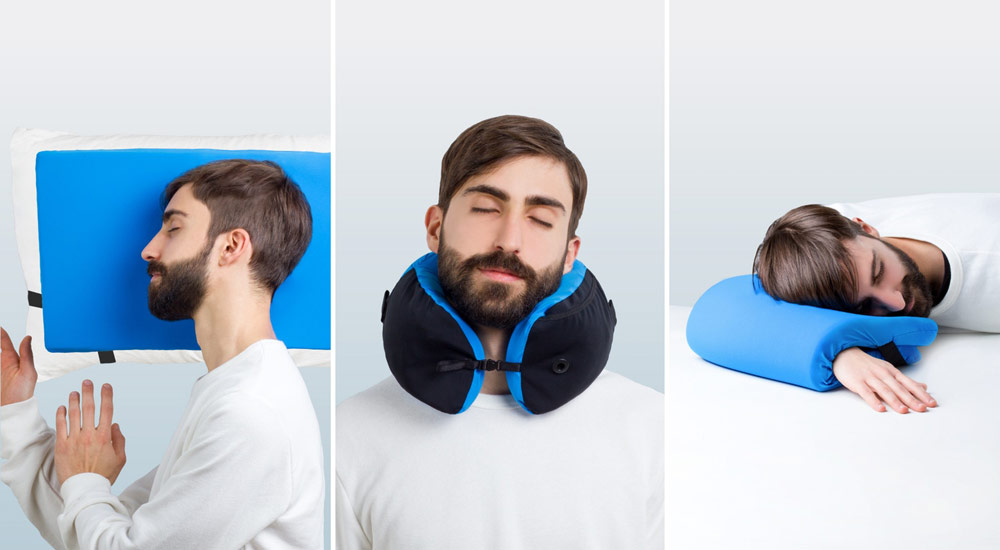
Collected: ~ $ 250,504 with a target of $ 12,417.
Deliveries: will begin in April 2018. New orders are accepted as part of the indefinite continuation of the campaign on Indiegogo.
The Omni Pillow transforming pillow was developed by the Italian design studio Banale, often using the Kickstarter platform. The current man, tormented by lack of sleep, always tries to sleep on the go. A clever Italian pillow will help him do it anywhere and in any position.
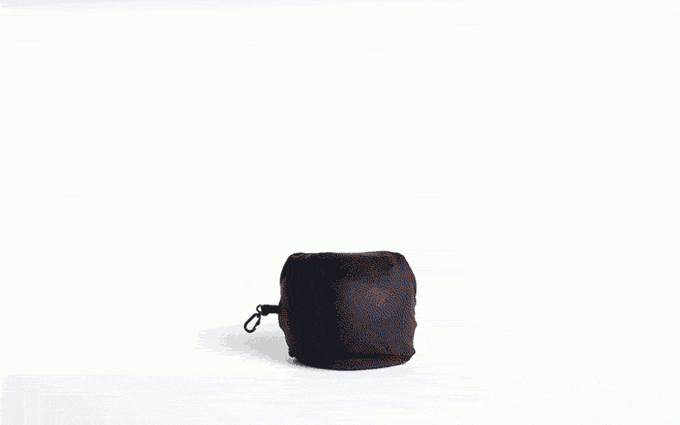
When folded, Omni Pillow is no larger than a large mango and is protected by a waterproof cover. The latter is sewn to the pillow, so that it does not lose. The first form is a pillow headrest, which is convenient to use in transport: unfolded and put on the neck. Part of the cover even turns into a pocket for a smartphone. When folded in half, it turns out to be an ordinary small pillow that will have to be placed in a tent or right at the workplace. If you open the Omni Pillow completely, you get a comfortable pad on the pillow in a dubious hotel or hostel. The size of the device is 55 x 30 x 4.5 centimeters, weight is 350 grams.
Memory foam is selected as the main material of Omni Pillow. On top of it is covered with a soft cloth, usually used for sewing sportswear. The price of ordering a pillow on Kickstarter started at $ 47, backer from Indiegogo, it will cost $ 55.
# 10 VR chair Yaw VR

Raised : $ 219,281 with a target of $ 150,000.
Deliveries: scheduled for August 2018.
Swivel chair Yaw VR looks like a washbasin, wok pan or children's furniture from Ikea. In fact, it is a full-fledged motion simulator for virtual reality, in which both adults and children can enjoy racing, flying, and other playful pranks.
Yaw VR is made so as not to take up much storage space, so the chair is assembled from several parts each time. The bowl with a seat is installed on the drop-down base, a footrest is inserted - and the attraction is ready. It rotates 360 ° around the vertical axis (hence the name Yaw), and rolls 24 ° to either side. At 95% power, the chair is able to make one revolution per second along with the load. Now the chair officially supports about 80 games and applications, including Need for Speed, Elite: Dangerous and IL-2 Sturmovik. In fact, Yaw already supports basic VR helmets (Oculus Rift, HTC Vive, Playstation VR). Further work in this direction continues.
The answer to the most important and exciting question: the chair can withstand a weight of over 200 kilograms (and even spin!). The recommended load is up to 150 kilograms.
The cost of a home VR attraction starts at $ 890 apiece. The working prototype of the chair had time to “roll in” at CES 2018. Apparently, the unusual VR-accessory appealed to the visitors of the exhibition.
What do you think about the February gadgets? Your opinion is important to us. Please leave comments about what devices seemed interesting to you.


Source: https://habr.com/ru/post/410783/
All Articles